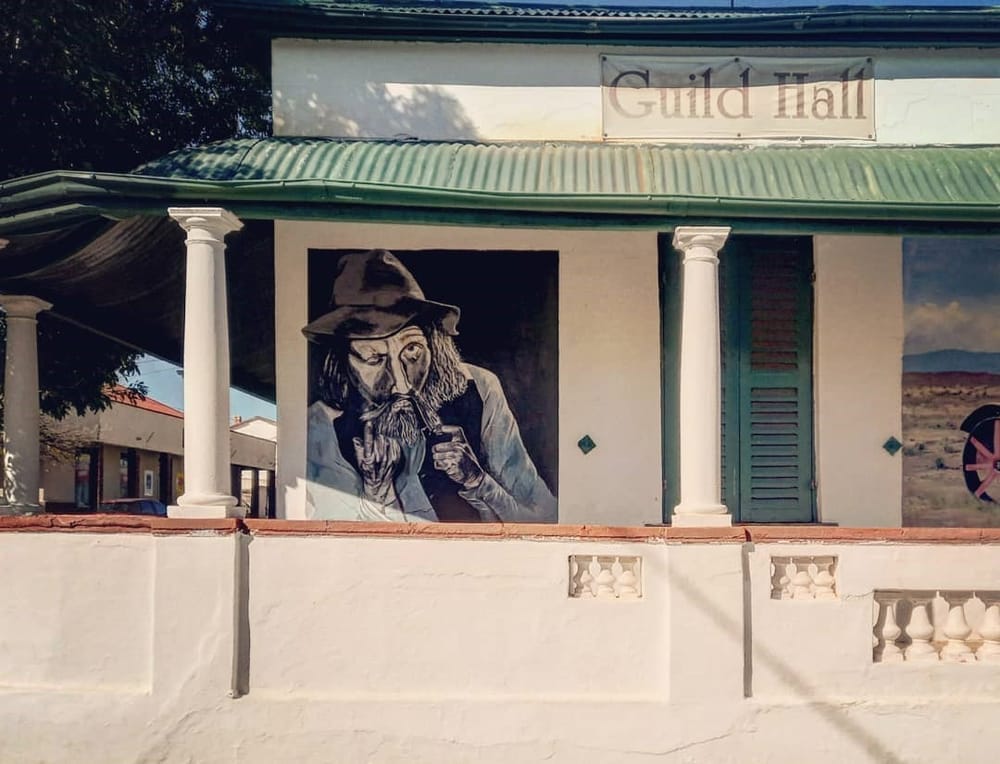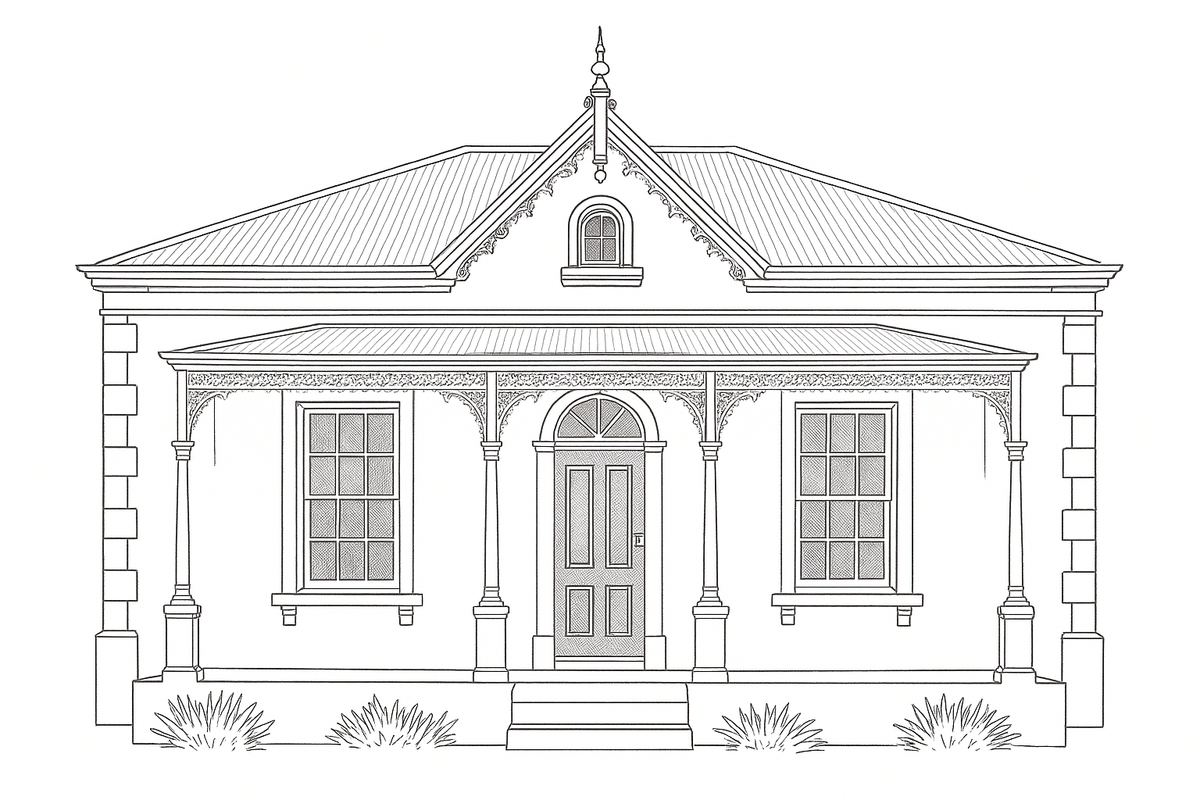Roots of the Karoo house
The Karoo house endures because it belongs so completely to its environment.

Whitewashed walls, corrugated iron roofs and long shaded stoeps are as much a part of the Karoo as the windmill. These homes may look simple, but each reflects the history of trade and craftsmanship that shaped life in South Africa’s interior.
Here, homes were never imposed on the land but negotiated with it. The result is one of South Africa’s most distinctive architectural vernaculars, born from empire and refined by necessity.


The echoes of empire
The origins of the Karoo house lie in the late nineteenth century, when the prosperity of wool and ostrich feathers transformed remote towns into miniature outposts of Victorian ambition. Cast-iron railings, sash windows, and pressed ceilings arrived along the same train lines that carried wool to the ports. But when these ornamental details met the Karoo’s elemental climate the style evolved into something more pragmatic.
Builders and stonemasons adapted what they knew. High-pitched corrugated-iron roofs replaced heavy thatch, creating crisp silhouettes against the endless sky. Thick masonry walls, built from local stone and clay bricks, held the day’s heat and released it slowly into cool nights. Ceilings were raised to let the air move. Deep stoeps wrapped around the façades like protective arms, softening sunlight and welcoming breeze. What began as a colonial gesture matured into an architectural language of restraint.
The stoep as threshold
No element captures the essence of Karoo living quite like the stoep. Part porch, part drawing room, it is the architectural equivalent of conversation: open and measured. Its purpose was practical (a shaded buffer between blistering daylight and cool interior) but it became the emotional core of the home.
The stoep blurred boundaries between private and public, allowing neighbours to greet without intrusion. Even today, when many stoeps have been enclosed with glass or extended with timber decking, the sense of openness endures.

The materials of survival
Understanding the Karoo house means grasping the materials with which it was built. Lime plaster gave walls their soft, reflective sheen. Corrugated iron, imported from Britain in the 1850s, transformed building practice once it reached the interior by train. Lightweight and durable, it replaced thatch and mud roofs and gave the Karoo skyline its soft metallic shimmer, inviting in the drumming of rain.
Interestingly, many early houses had blue-painted windows and doors, derived from a practical belief that the colour kept flies away.
The colour palette was dictated not by design trends but by geology and necessity: whites and pale creams to deflect heat and ochres and greys drawn from surrounding stone. These choices have found new expression in contemporary renovations that honour texture and authenticity over gloss, what architectural historians might call vernacular modernism before its time.
Modernity in conversation with heritage
The Karoo house occupies an intriguing space between nostalgia and reinvention. Many have been restored as boutique guesthouses or creative retreats, their interiors stripped back to reveal stonework and timber.
Others have been adapted for solar living, their thick walls perfectly suited to energy efficiency long before the term existed. Architects working in the region often describe their task not as redesign but as understanding how these old proportions still answer the climate better than any modern formula.
In many Karoo towns one finds an effortless blend of heritage and minimalism. A Victorian façade may open into a raw concrete extension, or a traditional stoep may now shade a swimming pool instead of a patch of dust. The dialogue remains consistent: a respect for balance and the generous stillness of space.
The lasting language of place
The Karoo house endures because it belongs so completely to its environment. It is architecture stripped of excess, guided by light and necessity. Its beauty lies in what it allows: coolness in summer and comfort in winter, and connection across distance. These homes tell us that practicality becomes art. The Karoo house has weathered drought, decline and revival, revealing thar true design achieves permanence.





Comments ()